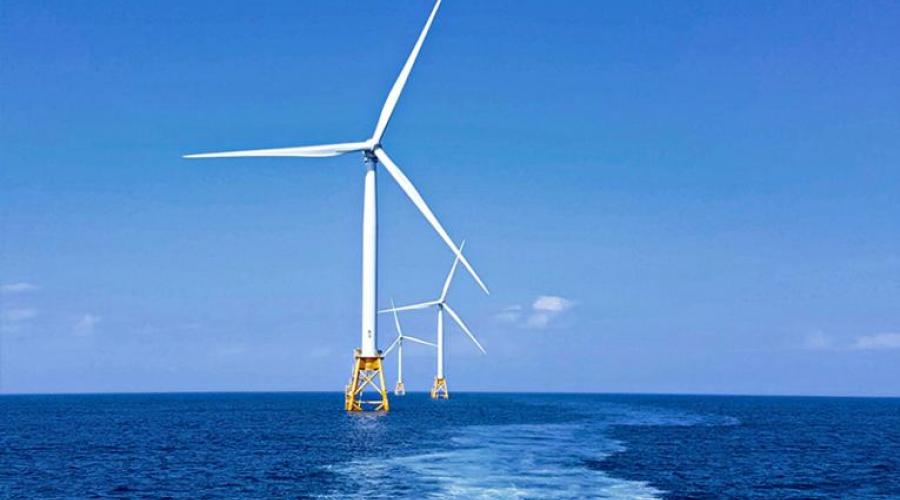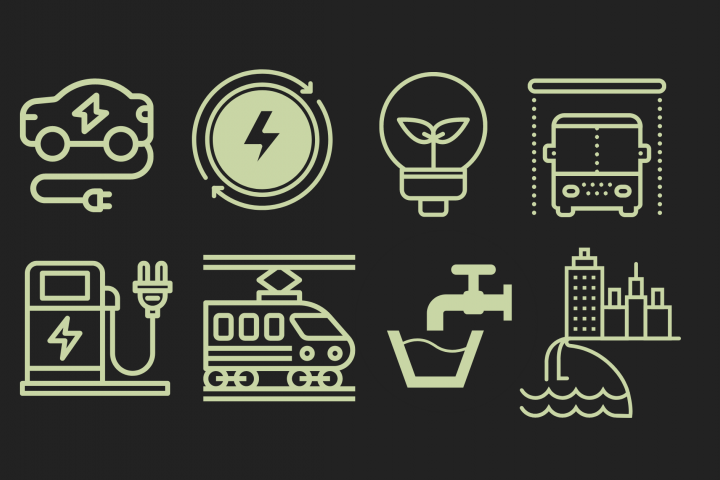
The U.S. Can Build the Largest Offshore Wind Industry in the World
The U.S. Can Build the Largest Offshore Wind Industry in the World with a Commitment to Ambitious Climate Action, Racial Justice, and Good Jobs
Tens of millions of Americans are currently out of work and the unemployment rate, as high as 1930s levels in April 2020, still hovers around 7% nationally. Low-wage industries that disproportionately represent women and Black, Indigenous, Latinx, and immigrant households have been the hardest hit, deepening and amplifying the alarming levels of inequality that currently exist in the U.S. Record numbers of Americans are also reporting that they don’t have enough money to put food on the table, pay rent and mortgages, or cover other household expenses.
At the same time, the crisis of climate change has been accelerating and worsening. 2020 turned out to be the hottest year on record. Thirty hurricanes slammed the Atlantic Coast of the U.S. this year and warmer, dryer conditions set the stage for a nightmare fire season in the western U.S. Like the COVID-19 pandemic, the climate crisis exacerbates existing inequalities, taking a particular toll on women, BIPoC communities, immigrants and the most vulnerable in our society.
Building a large, equitable offshore wind industry in the U.S. is an excellent opportunity for the Biden Administration and East coast states to respond to the current moment and the intersecting crises of COVID-19, climate change and inequality. The East coast is off to a good start but much more can be done to maximize the significant job creation and economic development potential this industry presents, particularly in the manufacturing and assembly of towers, blades, foundations and more.
Denmark, Germany, the United Kingdom and Taiwan have advanced ambitious strategies to develop a robust offshore wind industry and have the jobs numbers to prove it. Both the U.K. and Germany have set goals to build 40 GW of offshore wind by 2030. The U.K. has also set a goal of having 60% of the parts for their turbines manufactured in the U.K. Germany and Denmark, both sites of significant offshore wind manufacturing, employ over 20,000 workers in the offshore wind industry. Taiwan, setting an excellent example for the U.S., has required offshore wind developers to comply with stringent local manufacturing requirements that produce local jobs and help transfer manufacturing technology from the dominant offshore wind manufacturers to local firms.
The following elements can help develop an ambitious offshore wind industry in the U.S.:
- Set ambitious offshore wind targets and local manufacturing requirements. Climate scientists are clear that we must reduce our emissions at least 50% below 2005 levels by 2030 and procure 100% of our energy from renewable, low-carbon sources by 2035. This means that offshore wind has a crucial role to play in U.S. east coast states meeting their climate and clean energy goals in the next 15 years. By setting ambitious targets for how much offshore wind they will build and by when, these states will send a long, loud and clear message to the offshore wind industry that the U.S. is serious about offshore wind. This commitment, along with local manufacturing requirements, can open up important opportunities for manufacturing and assembly operations to be based in the U.S. – an aspect of the offshore wind industry that provides twice as many jobs as the construction of the turbines.
- Make offshore wind jobs good jobs. The best way to maximize the job creation and economic development impact of the offshore wind industry is by creating high-quality, family-sustaining, and community-supporting union jobs. A host of studies make clear that to combat inequality, we must strengthen the labor movement and create high-quality jobs with good wages and benefits. Investment in the clean energy economy and offshore wind should reverse inequality, not exacerbate it by creating low-quality jobs. Moreover, offshore wind developers are providing a service to states. States should ensure that taxpayer dollars are delivering good jobs and quality service. Several complementary labor standards help ensure that these new jobs will be good jobs: prevailing wage requirements to protect existing compensation standards; and Project Labor Agreements, Community Workforce Agreements, and labor peace and neutrality agreements that promote good relations between employers and employees and provide a guaranteed pipeline of highly-trained, highly-skilled workers. (See 5 Ways State and Local Governments Can Make Climate Jobs Good Jobs, Madland and Meginniss, October 9, 2020.)
- Increase funding for and expand access to government-registered apprenticeship programs. To ensure that historically disadvantaged communities have expanded access to high-quality training programs, including paid, on-the-job training, states can require that at least 15% of work-hours on an offshore wind project are performed by government-registered apprentices. Targeted hire initiatives are essential, too. States can adopt hiring mandates for women, people of color, formerly incarcerated individuals, people with disabilities, and local communities, and provide funding to local community groups to help recruit targeted communities to these training programs. This is an excellent way to ensure local communities are trained and hired for offshore wind projects and are brought into a pipeline for career advancement.
- The Biden Administration can commit to building the largest offshore wind industry in the world. President Biden’s commitments to tackle climate change, support frontline communities, and create union clean energy jobs opens up the opportunity for the U.S. to build the largest offshore wind industry in the world. The U.S. has the potential to build 100 GW of offshore wind power, mostly on the U.S. east coast. Both the Department of Energy and Department of the Interior can help supercharge U.S. offshore wind development by expanding federal leasing for offshore wind, negotiating long-term federal contracts to purchase offshore wind power, and by aggregating east coast projects to negotiate directly with offshore wind developers and manufacturers to have them commit to high-road labor and training standards and local manufacturing requirements.
East coast states and the U.S. as a whole have a generational opportunity to “build back better” from the COVID-19 pandemic and economic crisis by tackling the climate crisis with a massive buildout of offshore wind. With an ambitious commitment to creating as many high-quality jobs in the offshore wind industry as possible, we can put people to work – especially the frontline, communities of color hit hardest by COVID-19, climate change and pollution — and support the development of local manufacturing, assembly and port infrastructure in this new, growing industry. Let’s seize this opportunity.




